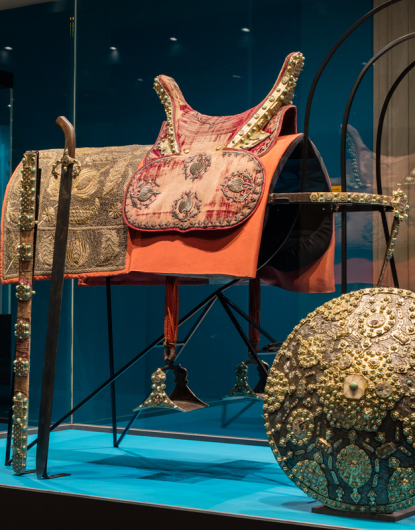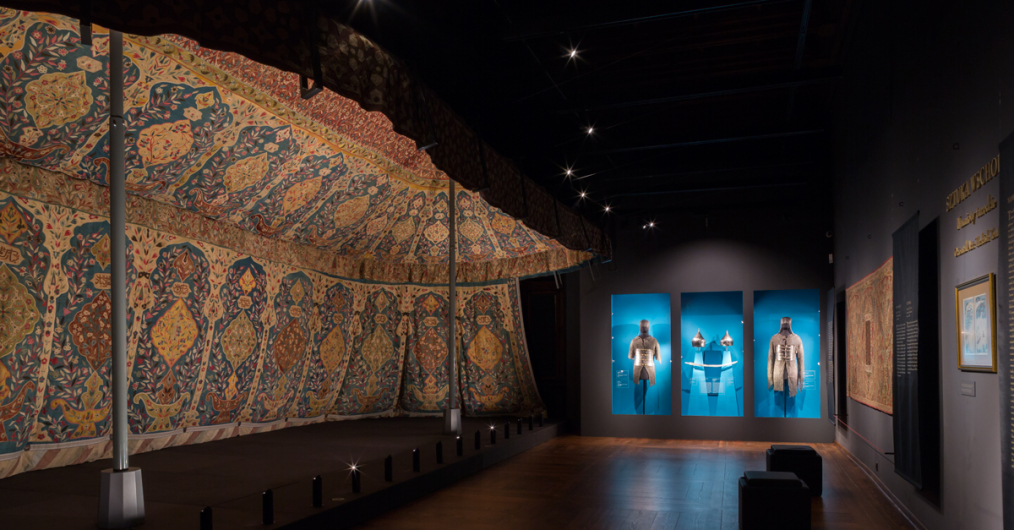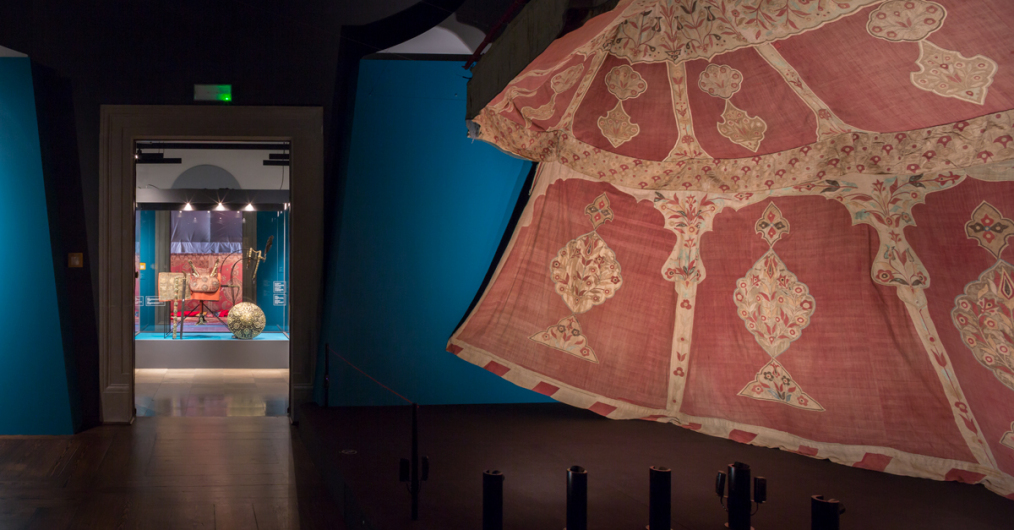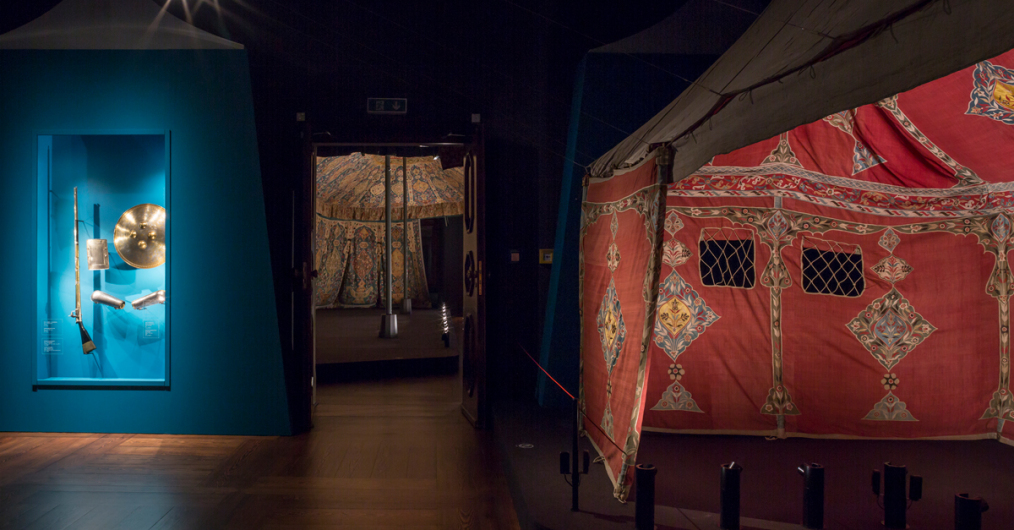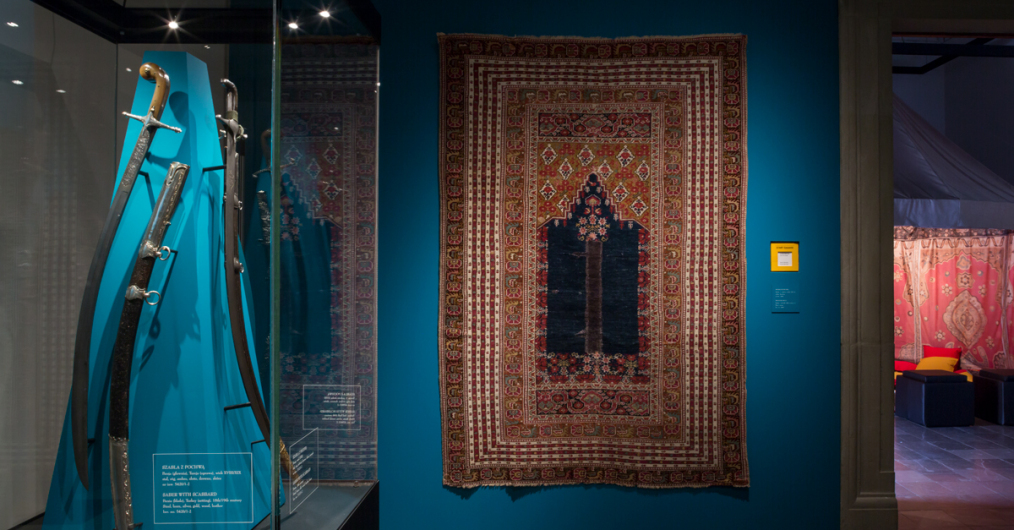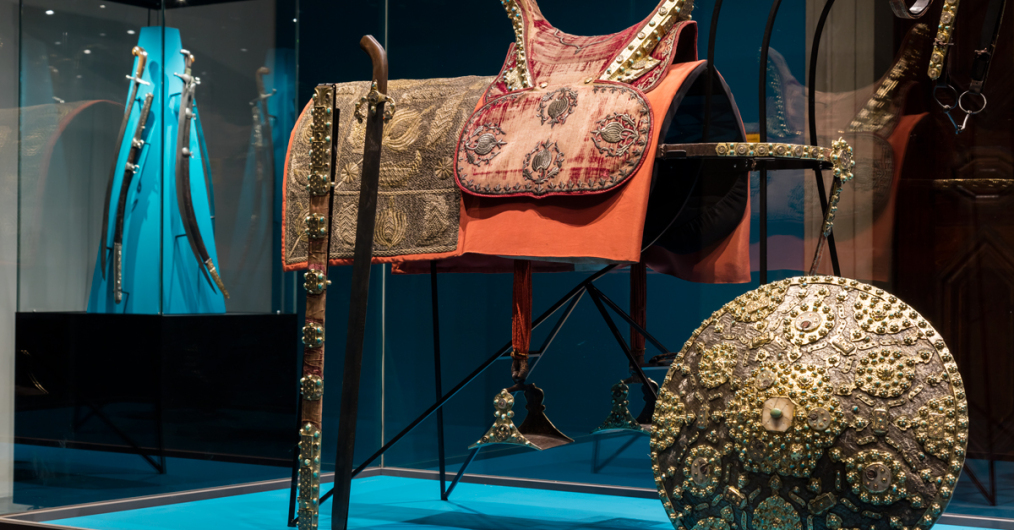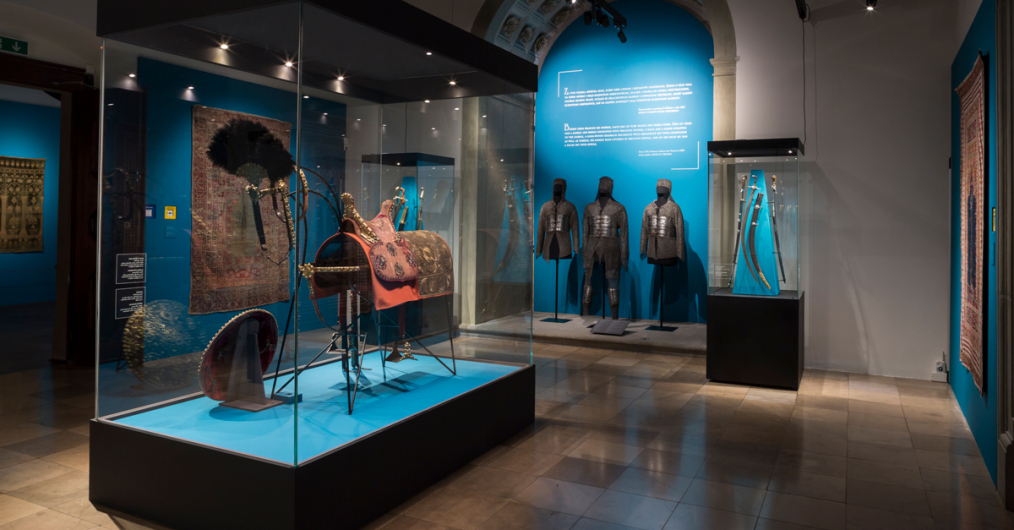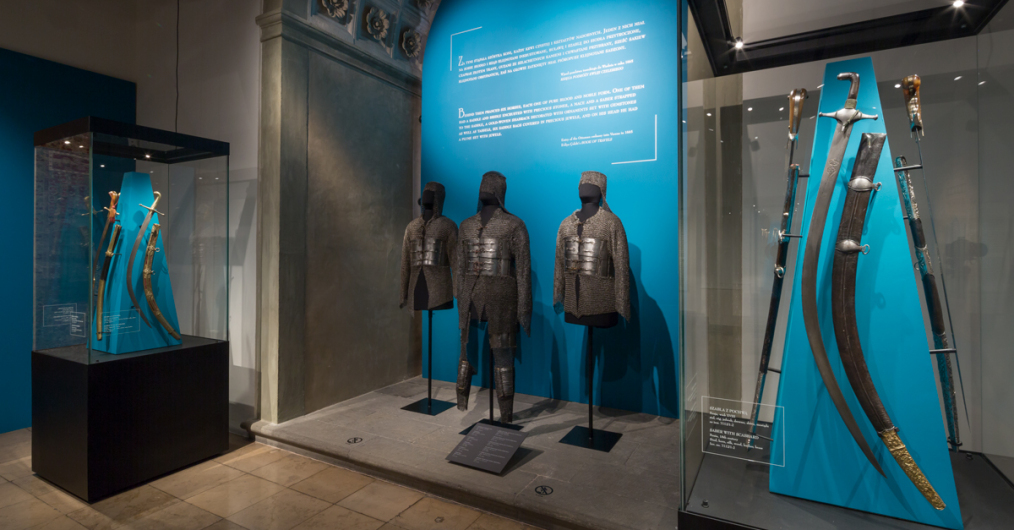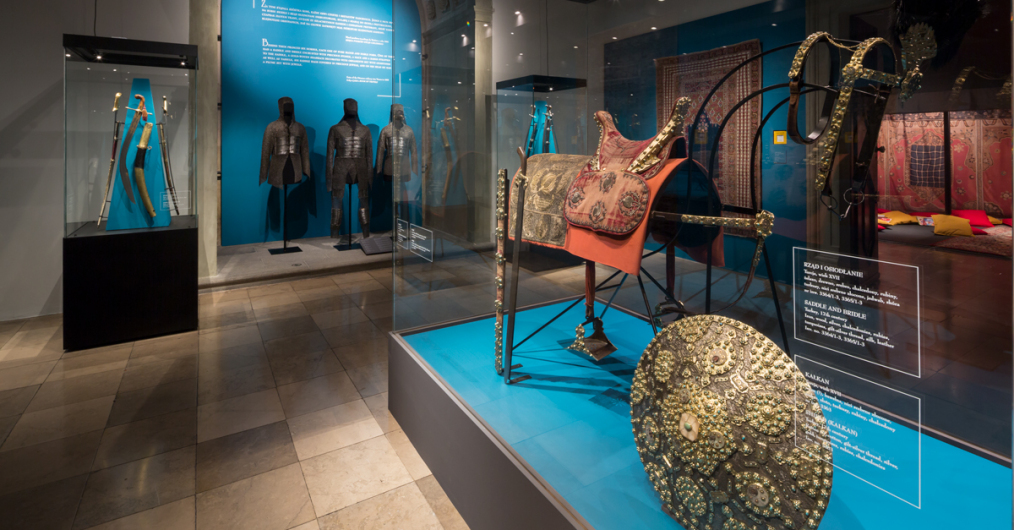Ottoman Tukish Tents
From the late Middle Ages onward, this vast state maintained diverse contacts with nations that had adopted Islam. The Commonwealth’s relations with its nearest neighbor, Turkey, were particularly close and initially, for the most part, peaceful. Trade between the two countries developed briskly, the wealthy cities of Cracow and Lwów (now L’viv) lay on the trade route linking East and West, and craftsmen in the Commonwealth’s eastern reaches skillfully emulated the extremely popular decorative arts flowing in from the East. In the seventeenth century, Polish-Turkish relations became locked in crisis, which more and more often erupted into armed conflict. Ultimately, it led the Polish army to Vienna. On the 12th of September 1683, King John III Sobieski led a combined Polish, Imperial, and German force to victory in one of the last great military confrontations between Europe and the Ottoman Empire.
Such a history, however, holds up only in some cases. In reality, a large portion of the fine carpets and costly arms were peacefully acquired. In the nineteenth century, such objects fueled the passion of collectors who keenly rounded up carpets, arms, and ceramics. Some were acquired for their beauty, others for their associations with great Polish victories, and still others as tangible signs of historical events. In the collections of Wawel Royal Castle
there are many such objects, which were put on permanent display in 1959. Reorganized five years later to include valuable new acquisitions, the exhibition was installed on two floors of the west wing of the castle. It remained unchanged until 1988, when the second floor with its renowned enfilade of Ottoman tents was closed for conservation reasons. Over thirty years later in 2020, a new edition of this part of the exhibition has reopened in a thoroughly redesigned space. The present exhibition of the Wawel collection of oriental art, which comprises spectacular collections of Turkish tents and banners, splendid textiles, fine armour, and East Asian ceramics, bears testimony to the centuries of contact between two great cultures—East and West—in times of peace, as well as war.
Such a history, however, holds up only in some cases. In reality, a large portion of the fine carpets and costly arms were peacefully acquired. In the nineteenth century, such objects fueled the passion of collectors who keenly rounded up carpets, arms, and ceramics. Some were acquired for their beauty, others for their associations with great Polish victories, and still others as tangible signs of historical events. In the collections of Wawel Royal Castle
there are many such objects, which were put on permanent display in 1959. Reorganized five years later to include valuable new acquisitions, the exhibition was installed on two floors of the west wing of the castle. It remained unchanged until 1988, when the second floor with its renowned enfilade of Ottoman tents was closed for conservation reasons. Over thirty years later in 2020, a new edition of this part of the exhibition has reopened in a thoroughly redesigned space. The present exhibition of the Wawel collection of oriental art, which comprises spectacular collections of Turkish tents and banners, splendid textiles, fine armour, and East Asian ceramics, bears testimony to the centuries of contact between two great cultures—East and West—in times of peace, as well as war.

The Polish-Turkish wars that dragged on throughout the seventeenth century increased the presence of opulent Oriental arms, parade equestrian equipment, carpets, and textiles in the homes of the nobility. “Poland was then awash with Turkish goods—lovely embroidered things, beautiful horses, splendid quivers, and divers other marvels,” wrote the Polish memoirist Jan Chryzostom Pasek after the victory over the Ottoman Turks at Chocim (now Khotyn) in 1673. Ten years later, the holdings of Turkish art in Polish hands were augmented by the magnificent trophies taken at Vienna, among them a group of exquisite Ottoman tents. These objects quickly became shrouded in legend. Over time, provenance from the Battle of Vienna began to be assigned to most objects of Middle Eastern origin.

The magnificent saddle and bridle set with gold and precious stones once belonged to Christoph Leopold Schaffgotsch, an envoy of Leopold I to the court of John III Sobieski. The parade horse equipment and arms was made by the leading craftsmen of Istanbul and is among the most splendid military equipment preserved in the Wawel collection. Also on view are edged weapons and a very specific type of plate and mail armor, called yushmans.

The 17th-century Ottoman two-poled tent—one of the largest in the Wawel Castle collection—is an exceptional blued color. The tent walls are adorned with arcades; amid its rich floral decoration, there are medallions with inscriptions in Arabic script of blessings of happiness and prosperity. The tent is exhibited alongside the blade of a saber traditionally linked to Grand Vizier Kara Mustafa Pasha, the commander of the Ottoman army at Vienna, and two 16th-century Turkish helmets.

Two smaller two-poled tents exhibited on this floor date from the early 18th century and may have been used for travelling or hunting as temporary shelter. Although less opulent, their decorations echo the pattern of the blue tent: arcades filled with medallions and floral decoration. Flowers also appear on the 17th-century Turkish Iznik ceramics and on the carpets from the Kulczycki collection.
